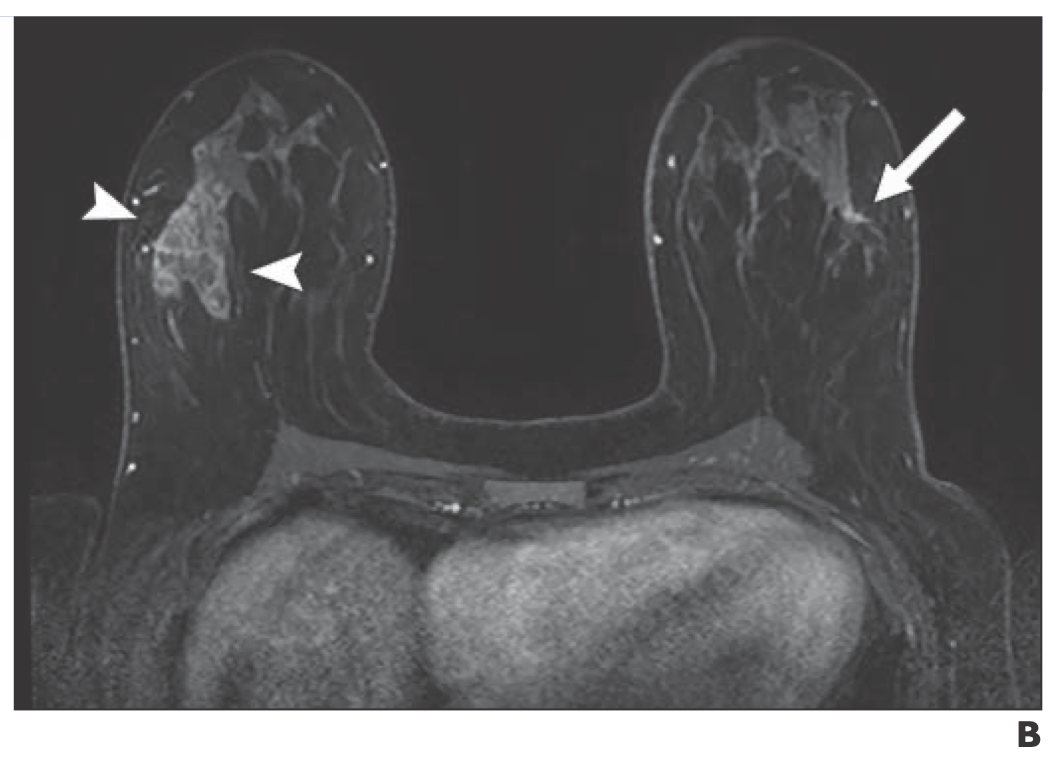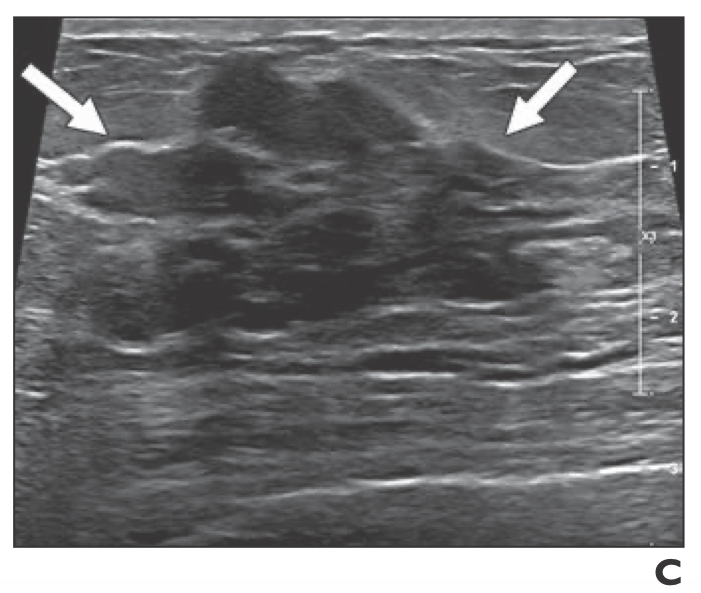Breast MRI-Identified Lesions During Neoadjuvant Therapy Are Largely Benign
Suspicious lesions that develop during neoadjuvant therapy are uncommon, and they are highly unlikely to be malignant.
New lesions picked up by breast MRI scans conducted to assess neoadjuvant treatment for breast cancer are uncommon, and according to new research, they are not likely to be malignant.
Breast MRI is routinely used to evaluate a patient’s response to neoadjuvant therapy, but there is little-to-no guidance available on how to manage the new suspicious lesions that rarely occur. In a Jan. 14 article published in the American Journal of Roentgenology, investigators from the University of California at San Francisco (UCSF) show that new findings appear in only 5.5 percent of cases and none were malignant, potentially reducing the number of biopsies ordered.
“Our findings suggest that new lesions that arise in the setting of neoadjuvant therapy are highly unlikely to represent a new site of malignancy, particularly if the index malignancy shows treatment response,” wrote a team led by Donna A. Eckstein, M.D., from the radiology and biomedical imaging department at UCSF.
A, Contrast-enhanced axial T1-weighted fat-saturated image from baseline MRI before initiation of neoadjuvant therapy shows irregular spiculated mass (arrow) in upper outer left breast corresponding to biopsy-proven carcinoma. Credit: American Journal of Roentgenology

This is the first study, they said, to look at and evaluate the malignancy potential for lesions that appear on MRI during breast cancer treatment.
Contrast-enhanced axial T1-weighted fat-saturated image from follow-up MRI performed 2 months after initiation of neoadjuvant therapy shows near resolution of left breast mass (arrow). New regional heterogeneous nonmass enhancement (arrowheads) in upper outer right breast was assessed as BI-RADS 4. Credit: American Journal of Roentgenology

C, Targeted ultrasound of upper outer right breast performed 1 week after B shows hypoechoic, indistinct mass (arrows) in right breast at 10-o’clock position 3 cm from nipple corresponding to right breast nonmass enhancement. Pathologic examination of ultrasound-guided core biopsy revealed acute and chronic periductal inflammation and acutely inflamed granulation tissue-type stroma. No atypia or malignancy was identified. Credit: American Journal of Roentgenology

By examining results from 419 breast MRI scans conducted on 297 women from Jan. 1, 2010, to June 30, 2018, Eckstein’s team set out to determine the frequency and outcomes from these new suspicious lesions. Based on the exams conducted on 1.5T and 3T scanners, a group of 13 fellowship-trained breast radiologists identified 23 MRI exams – 5.5 percent – that included new suspicious findings that were distinct from those initially identified prior to neoadjuvant treatment.
These patients were treated with a variety of therapeutic combinations, including chemotherapy, anti-HER2 therapy, immunotherapy, hormonal therapy, and cyclin-dependent kinase inhibitors. And, on average, the time between baseline pretreatment breast MRI and follow-up MRI was 2.9 months.
According to the team’s analysis, all new suspicious MRI findings were assessed to be BI-RADS 4. Thirteen of the 23 lesions (56.5 percent) were contralateral to the known malignancy, nine (39.1 percent) were ipsilateral, and one (4.3 percent) involved the bilateral breasts. The lesions types included masses (69.6 percent), non-mass enhancements (21.7 percent), and focus (8.7 percent).
Overall, the team determined, these new lesions should not immediately raise a red flag if they appear on breast MRI during neoadjuvant therapy as the likelihood of malignancy is small. Still, as these results raise the possibility of averting biopsy, additional investigations are necessary. To validate that conclusion, larger studies in a variety of institutions should be conducted.
For more coverage based on industry expert insights and research, subscribe to the Diagnostic Imaging e-Newsletter here.
Could Ultrafast MRI Enhance Detection of Malignant Foci for Breast Cancer?
April 10th 2025In a new study involving over 120 women, nearly two-thirds of whom had a family history of breast cancer, ultrafast MRI findings revealed a 5 percent increase in malignancy risk for each second increase in the difference between lesion and background parenchymal enhancement (BPE) time to enhancement (TTE).
MRI Study Suggests Shape of White Matter Hyperintensities May Be Predictive of Cognitive Decline
April 7th 2025Emerging research demonstrated that cognitive declines in memory, executive function and processing speed domains were associated with irregular shape of periventricular/confluent white matter hyperintensities.
Can Abbreviated MRI Have an Impact in Rectal Cancer Staging?
April 4th 2025Abbreviated MRI demonstrated a 95.3 percent specificity for rectal cancer and provided strong agreement with the full MRI protocol for T staging and detection of extramural venous invasion, according to newly published research.